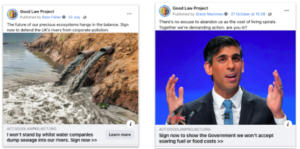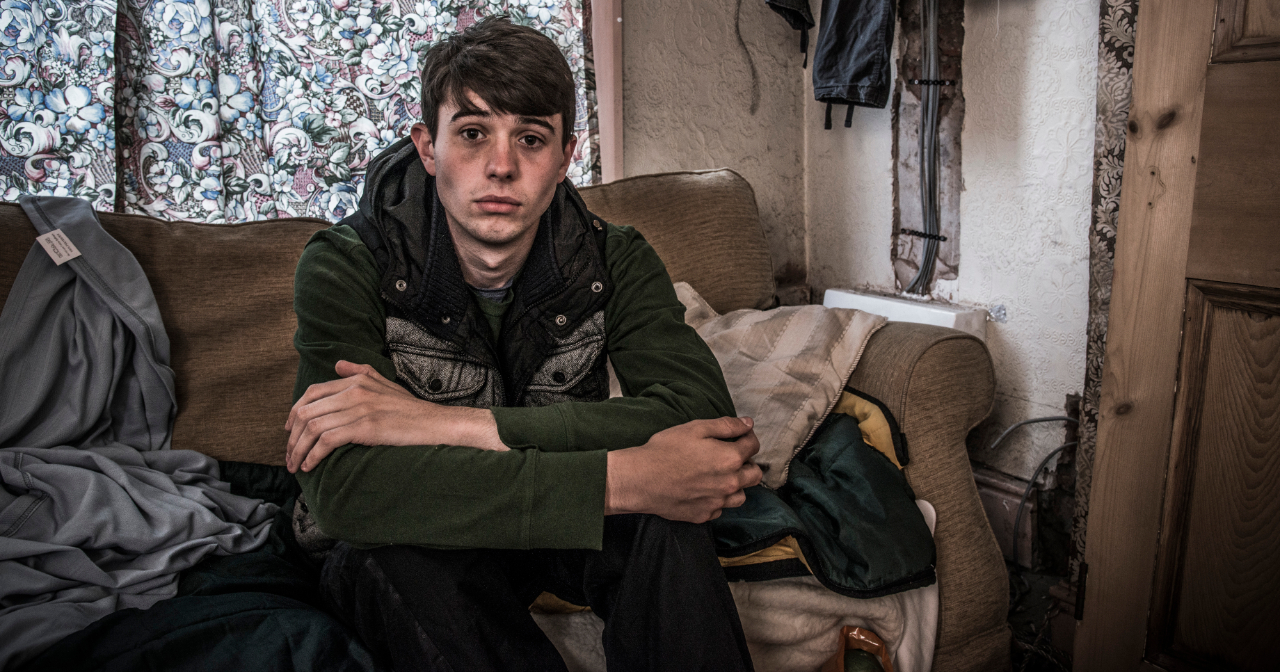The 30 second read:
By designing handraisers in response to real-time events then systematically optimising them, we achieved exceptional results – bringing in 50,000 new supporters with a 675% return on ad spend. We also proved that with the right ask, you don’t need to be a service-based charity to raise money from individual donors.
The longer read:
The challenge
Good Law Project is a campaigning non-profit that uses the law to hold politicians, companies and powerful people to account. Our challenge was to design and test a topical handraiser that would help them significantly grow and diversify their supporter base. But in a year when political news stories were evolving at lightning speed, we had to work fast to keep up.
We wanted to prove that by using digital mobilisation principles, Good Law Project could grow their email list rapidly and cost effectively, and motivate these new supporters to donate too. Our aim was to establish a successful model, so that they could then confidently invest more to scale it up.
What we did and why
- Handraisers
We planned to test three handraiser concepts using a minimum viable product (MVP) approach, which meant developing simple, low-cost versions of each one.
Good Law Project’s work is so fast-moving and responsive, making them the perfect partners to test handraisers based on topical subjects. But the rapidly changing face of politics in 2022 meant one of our concepts became out of date before we began testing! (This is always a risk with news-based content, and a great reason why it’s so important to have more than one handraiser running.)
The handraisers – built on our Blueprint handraiser platform – were designed to make it easy for people to take action and opt in to receive emails. We then used an optimised series of follow-up calls to action to drive more engagement, including a two-question survey designed to prime people to respond to a regular gift ask.
Both handraisers showed strong initial results, so we continued to promote two for the duration of the pilot. The framings we ran with were:

2. Ad campaign
We ran a 12-week Facebook ad campaign, with 20 ad variants per handraiser, across three audiences. The wide range of ads meant we could appeal to a broad audience, and keep content fresh, so people didn’t tire of seeing the same creative lots of times.
The handraiser topics presented opportunities to use really engaging imagery – photos of politicians and photos of sewage both inspired strong responses from our audiences!

3. A/B testing
We ran A/B tests on both the landing pages and daisy chain to optimise performance.
The impact
This was one of our best performing pilots ever, smashing our targets and benchmarks. It shows the huge potential of a digital mobilisation model and the power of responding to urgent, real-time events. It also proves that you don’t need to be a service-based charity to succeed in raising money from individual donors.
The handraisers recruited 50,000 new supporters at less than half the cost we were aiming for. The opt-in rate on the sign-up form was 63.8% (target: 50%); the post-action daisy chain ask converted 1.1% of people to regular givers (target: 0.2%); and the lifetime return on ad spend was 675.7% (target: 100%); that means for every pound Good Law Project spent on ads, by the end of the handraiser action journey they’d raised £6.75 in lifetime income from recurring donations.
Good Law Project is now well on its way to realising its vision of an active, always-on digital mobilisation model. The next stage is to scale up and invest more in the programme, and offer new ways for supporters to be involved. By continuing to grow and strengthen their community and income base, Good Law Project will ensure they’re always ready to react quickly to hold powerful people and organisations to account.


